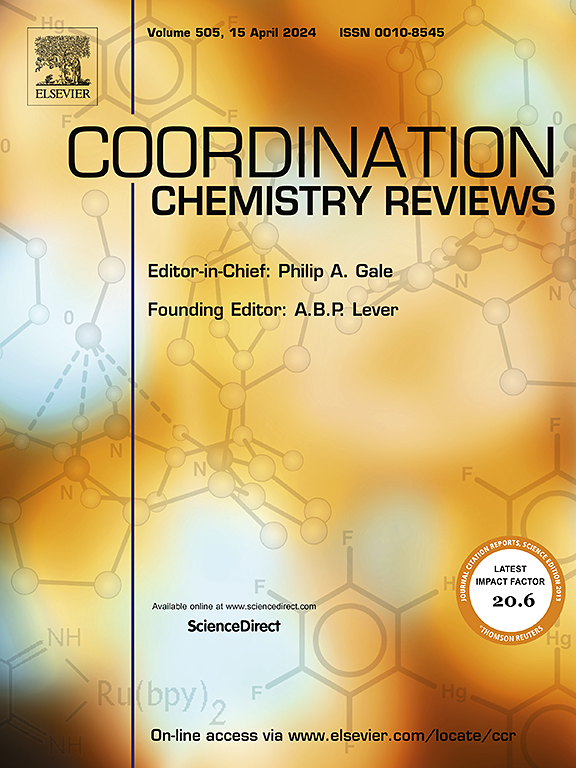Toward a molecular-scale picture of water electrolysis: mechanistic insights, fundamental kinetics and electrocatalyst dynamic evolution
IF 20.3
1区 化学
Q1 CHEMISTRY, INORGANIC & NUCLEAR
引用次数: 0
Abstract
Scaling up water electrolysis is hindered by the need of low-cost, high-activity, and long-durability electrocatalysts for the hydrogen evolution reaction (HER) and oxygen evolution reaction (OER). Although reviews published previously focus exclusively on the electrocatalysts development, there is a lack of review focusing on the microcosmic knowledge of water electrolysis. The rational design of water-splitting electrocatalysts must be grounded in a fundamental molecular-level understanding of both HER and OER. Herein, we provide a comprehensive review of recent advances in molecular-level understanding of water electrolysis and identify the critical challenges throughout the entire process of splitting water to hydrogen, including reaction mechanism, active sites, reaction intermediates, fundamental kinetics, electric double layer, and dynamic evolution of electrocatalysts. Unusual active sites and reaction intermediates detected experimentally are summarized and in situ techniques are highlighted due to their irreplaceable role in unrevealing the dynamic process at the molecular level. We also delve into the kinetic challenges associated with these electrochemical reactions, particularly the sluggish HER kinetics in alkaline media and the identification of rate-determining step of OER. Moreover, the effects of electric double layer and dynamic surface evolution on catalytic performance are discussed to highlight the importance of in situ monitoring the electrolyte/electrode interface. By integrating insights from experimental and theoretical studies, this review aims to offer valuable guidance for the design and development of efficient and durable water-splitting electrocatalysts. The state-of-the-art electrocatalysts and electrolyzers are also summarized to bridge the gap between the research advances and industrial demands. Finally, we provide the outstanding issues and current challenges for obtaining a more complete molecular-level picture of water electrolysis.
求助全文
约1分钟内获得全文
求助全文
来源期刊

Coordination Chemistry Reviews
化学-无机化学与核化学
CiteScore
34.30
自引率
5.30%
发文量
457
审稿时长
54 days
期刊介绍:
Coordination Chemistry Reviews offers rapid publication of review articles on current and significant topics in coordination chemistry, encompassing organometallic, supramolecular, theoretical, and bioinorganic chemistry. It also covers catalysis, materials chemistry, and metal-organic frameworks from a coordination chemistry perspective. Reviews summarize recent developments or discuss specific techniques, welcoming contributions from both established and emerging researchers.
The journal releases special issues on timely subjects, including those featuring contributions from specific regions or conferences. Occasional full-length book articles are also featured. Additionally, special volumes cover annual reviews of main group chemistry, transition metal group chemistry, and organometallic chemistry. These comprehensive reviews are vital resources for those engaged in coordination chemistry, further establishing Coordination Chemistry Reviews as a hub for insightful surveys in inorganic and physical inorganic chemistry.
 求助内容:
求助内容: 应助结果提醒方式:
应助结果提醒方式:


